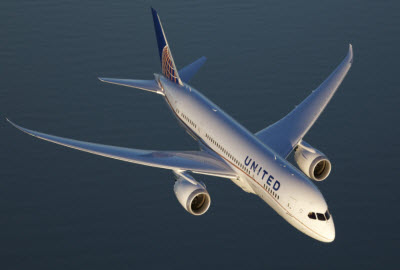Flying with disability travel tips to survive Thanksgiving style congestion
- Written by Roberto Castiglioni
 Air travel peaks at busy times like Thanksgiving weekend making it crucial for passengers with a disability to follow tips that may help make air travel congestion bearable.
Air travel peaks at busy times like Thanksgiving weekend making it crucial for passengers with a disability to follow tips that may help make air travel congestion bearable.
The Wednesday before Thanksgiving Day is traditionally the most crowded for American airports. A study by U.S. Travel and Cambridge Analytics shows are becoming a regular feature at airports across the United States.
In 2013, six of the 30 largest U.S. airports experienced congestion levels equal to the Wednesday before Thanksgiving Day at least one day each week. Preparedness is the answer to mitigate the impact of a congested airport when flying with a disability.
Carriers operating flights from, to and within the United States of America must have a customer care plan to assist the needs of passengers in case of flight irregularities, such as flight diversion, cancellation or a lengthy tarmac delays.
The US DOT requires carriers to give passengers notification about the status of delays every 30 minutes while the plane is delayed, including reasons for delay when known. Airlines must let passengers of opportunity to deplane from an aircraft that is at the gate or another disembarkation area with door open if the opportunity to deplane when possible.
Airlines must give passengers with disabilities dignified, professional and polite service and proper accommodations at all times, including during lengthy tarmac delays. Carriers must make reasonable efforts to make sure that essential needs like food, water, restroom facilities, and basic medical support are met.
Once you have chosen your destination, create a checklist tailored to the type of help you may need. It is important to remember  that some physical, cognitive, visual or hearing conditions may need bespoke support.
that some physical, cognitive, visual or hearing conditions may need bespoke support.
It is useful to let the airline know of your needs at the time of booking. Make sure you receive written acknowledgement or confirmation of your request for help. Print it out and keep it with you throughout your journey.
Airlines may not be allowed to accept certain emotional support animals for carriage due to international laws. It is recommended to check with the airline If you are traveling with an emotional support animal other than a dog to a destination outside the United States.
Spend time checking available facilities and services at departure and arrival airports. Most airport websites give plenty of information about infrastructure and services available to passengers with disabilities. Make sure that you have reasonable time between connections and help available to meet your mobility needs.
If you are over 60 and have low or high blood pressure, diabetes, high Cholesterol (LDL), high estrogen levels (women), are depressed, obese, a heavy drinker, a heavy smoker you may wish to make use of the flying with dementia checklist to improve the quality of your journey.
 Large, crowded airports can be challenging environments for people with autism, cognitive impairment, disabled children and the elderly. When possible, travel with someone who can help you.
Large, crowded airports can be challenging environments for people with autism, cognitive impairment, disabled children and the elderly. When possible, travel with someone who can help you.
Every airline must appoint a complaint resolution official (CRO) at every airport. CROs have the duty to address concerns of any person with a disability.
It is always best to resolve a problem as it occurs rather than raising a complaint in the aftermath. If you experience a problem at the airport ask the nearest available airline agent to call the CRO on duty.
More and more people travel with electric wheelchairs. Remember that electric wheelchairs powered with wet cell batteries may not be accepted on-board. Check with the airline at the time of booking to avoid disappointment on the day of travel.
Most airlines will want you to travel with a companion if you are unable to buckle or unbuckle your seat belt on your own, retrieve  and wear your life jacket, put on an oxygen mask, make your way (not necessarily walk) to the emergency exit, or if you are unable to understand and react to safety instructions.
and wear your life jacket, put on an oxygen mask, make your way (not necessarily walk) to the emergency exit, or if you are unable to understand and react to safety instructions.
It is important to remember that Cabin crew will help you in and out of your seat, to and from toilets, and will aid you storing your hand luggage in the overhead bins, but they will not help you using the toilet, eat, or give you prescription medication.
The vast majority of airlines offer passengers meal options. Take some time to browse dietary options available on your flight. However, it is always wise to have a plan B in place; pack some suitable, non-perishable food in your carry-on luggage.
Movie captioning is available on most long haul flights. ISL (International Sign Language) safety instruction leaflets are still rare to find. Safety instruction leaflets in Braille are becoming more and more common across the airline industry.
When traveling long haul passengers may need to make frequent “pit stops”; elderly and passengers with a physical limitation should ask to be seated closer to toilets. Most modern long haul airplanes are fitted with at least one accessible toilet.
I hope these simple tips will help you enjoy a seamless journey. Happy Thanksgiving!










